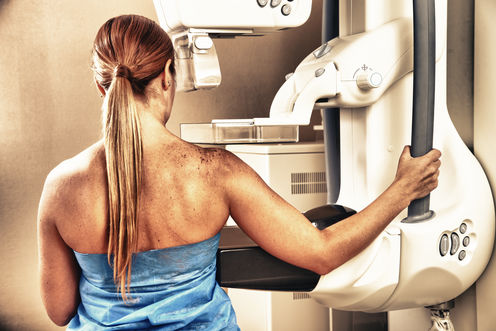
We’re told that “prevention is better than cure”; that finding symptoms of disease early will prevent the more serious consequences of that disease, particularly for cancer.
Women largely understand that a regular screening mammogram may decrease their chance of dying from the disease by allowing earlier detection and therefore less aggressive treatments. This is largely true: for every 1,000 women screened over a 25 year period, nine will not die from breast cancer because of that screening. But it does not give the entire picture.
For a minority of women diagnosed with the “pre-cancerous” lesion ductal carcinoma in situ, or DCIS, treatment doesn’t reduce their chance of getting or dying from breast cancer.
DCIS consists of abnormal cells in the breast ducts that rarely cause any symptom but are detectable on mammogram, often calcium deposits in the breast. This is also known as “stage 0” breast cancer.
Many of these indolent lesions are unlikely to ever cause a problem in a woman’s lifetime. So finding one can be said to be “over-diagnosis”. This detection will result in “overtreatment”, with surgery (lumpectomy or mastectomy, where the lump or breast is removed) and perhaps radiotherapy.
A recent Australian analysis concedes it is hard to put a definite figure on this, but it around eight women in every 100 screened over 25 years may have one of these “over-diagnosed” and “over-treated” lesions.
The real problem is that we currently have little ability to predict which of these DCIS lesions will either progress into an invasive cancer or predict the development of a future invasive cancer, with the potential to spread and impact on a woman’s life.
A study released last week in JAMA Oncology adds further data to this debate, but perhaps leads to more questions than answers. This study is a detailed examination of a huge North American registry database of outcomes of 100,000 women diagnosed with DCIS between 1988 and 2011 were studied.
The authors show that, overall, women diagnosed with DCIS have the same chance of dying of breast cancer than women with no breast problems: 3.3% after 20 years of follow up.
However, there were some important exceptions. Very young women (under 35) diagnosed with DCIS, women of African American ethnicity, and those with the more aggressive types of DCIS (larger, high-grade and non-hormone-dependent) had a higher risk of dying of breast cancer.
The researchers found treating DCIS did not save lives. Having a more radical surgery – mastectomy rather than lumpectomy – or adding radiotherapy to a lumpectomy overall did not decrease the chance of ultimately dying of breast cancer.
Interestingly, having a mastectomy or radiotherapy lowered the chance of getting an invasive cancer in the treated breast yet did not alter the chance of dying of breast cancer. This suggests that some DCIS lesions do have the ability to spread.
What can we conclude from this study? Well, it seems to confirm that there are at least two types of DCIS – and the more aggressive one does need to be treated.
But the majority of women with DCIS will not go on to get invasive cancer. So perhaps we need to consider DCIS more as a warning sign of potential future cancer risk. This opens the way for new research into less aggressive treatments for these types of DCIS, and how best to lower future cancer risk with drug treatments or even lifestyle changes such as weight loss and exercise.
Breast cancer screening undoubtedly has benefits but the size of these benefits is debated. A recent review from the United Kindom suggested perhaps only one out of 15 women diagnosed with cancer by mammographic screening will be helped:
- three will die of breast cancer anyway
- eight will likely have survived even if not treated until symptomatic
- three have cancers that would not have manifested or killed them anyway
- one will avoid breast cancer death.
The Australian breast screening program probably offers better odds than this, with more frequent screens, excellent equipment, staff and quality assurance, and good access to care for the majority of Australians.
Only further research can unravel exactly which DCIS is really a risk to health and needs aggressive treatment, which DCIS may be a marker of future cancer risk and how we can modify this risk, and perhaps which DCIS is an indolent condition which will never affect a woman in her lifetime.
When deciding whether or not to go for a mammographic screening test, getting balanced comprehensive information is important. Working out your individual cancer risk (via calculators such as this) and what you can do about it may help inform not only your screening choices but also your lifestyle choices which in turn can help prevent a number of diseases.
Understanding your individual risk also relies on emotions, anecdote and personal experience; this all feeds into decision-making.
However, choice does not solve the fundamental dilemma of screening: is it ethically acceptable to cause serious harm in some people in order to improve the prognosis of others?
Christobel Saunders does not work for, consult, own shares in or receive funding from any company or organization that would benefit from this article, and has disclosed no relevant affiliations beyond the academic appointment above.
